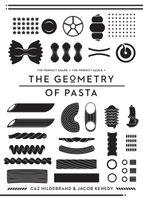Advertisement
Capelli d’Angelo
By Caz Hildebrand and Jacob Kenedy
Published 2010

These thin, thin strands of pasta (‘angel’s hair’ or ‘little worms’) can be a challenge in the modern kitchen: they cook very fast, overcook easily, and their fine texture can become porridgy if served in a thick sauce – they have no backbone to hold it up. It was a different challenge that led them to be so highly esteemed during the Renaissance. So difficult to make by hand as to be nigh-on impossible, they were the height of refinement. Specialist nuns would make them in their convents, particularly to feed to new mothers, as the pasta was believed to help their milk to ‘drop’. Their exceeding fragility means they are always dried in nidi (nests), as they are too delicate to hang up to dry, or to transport otherwise.



